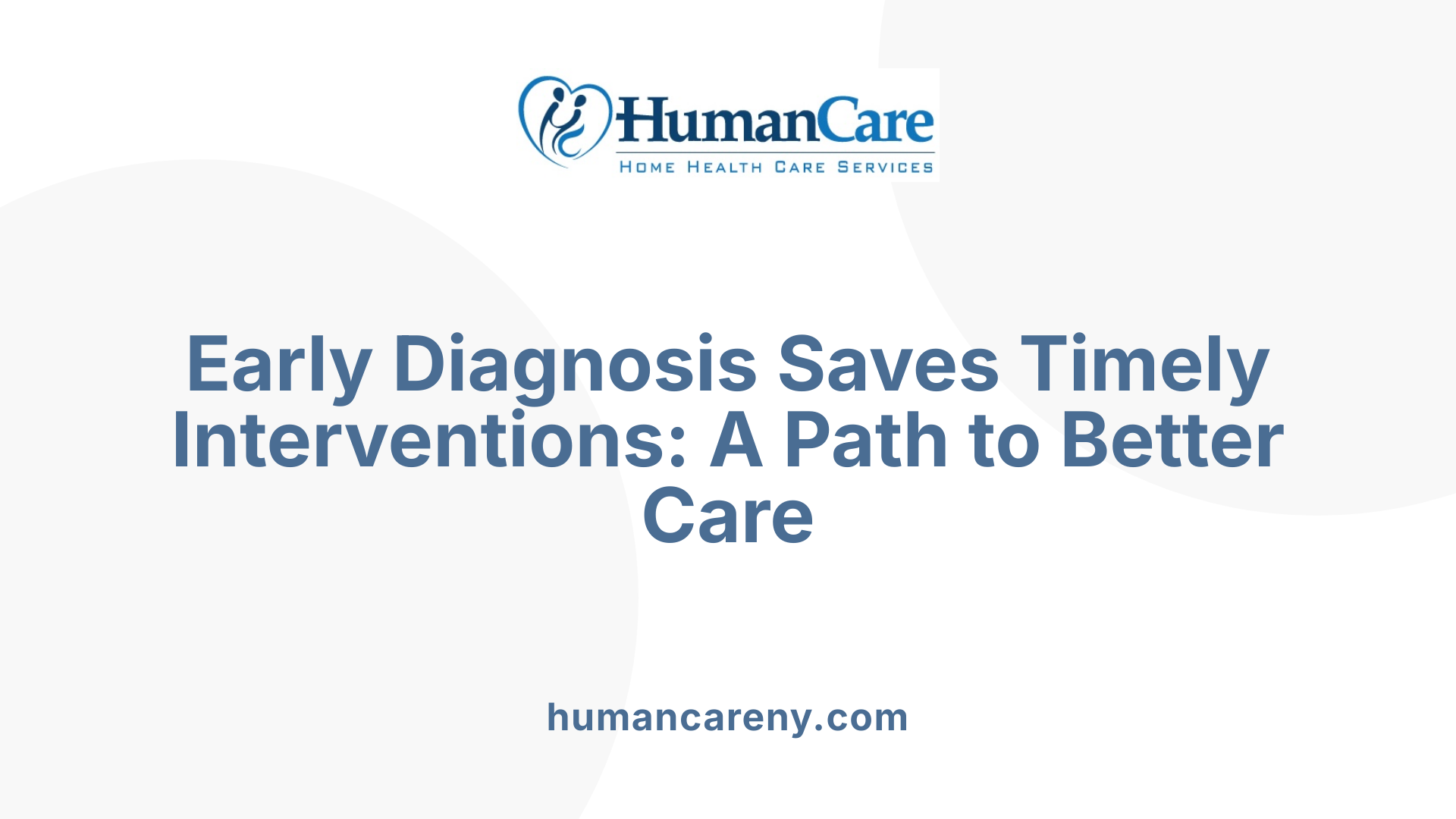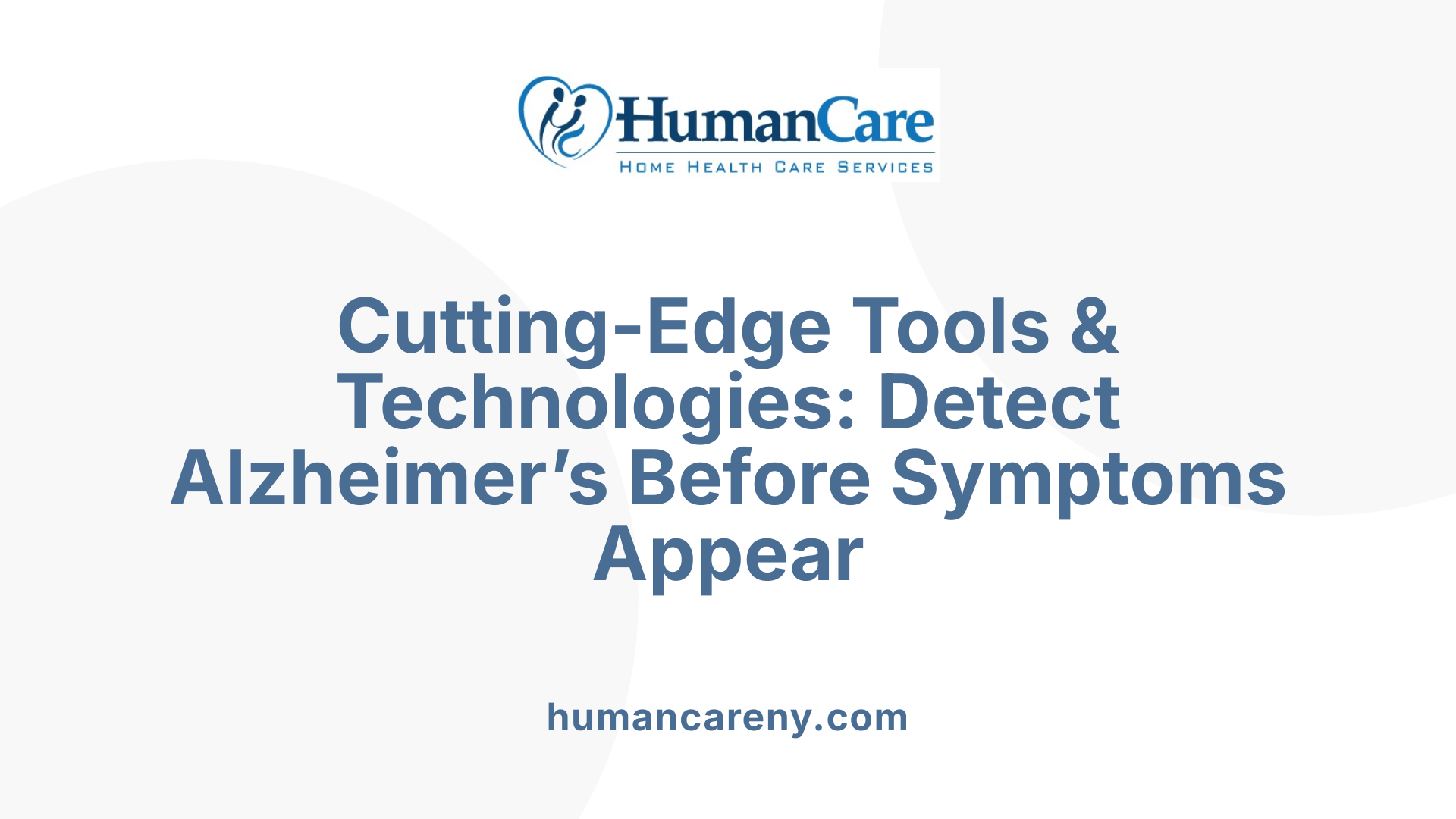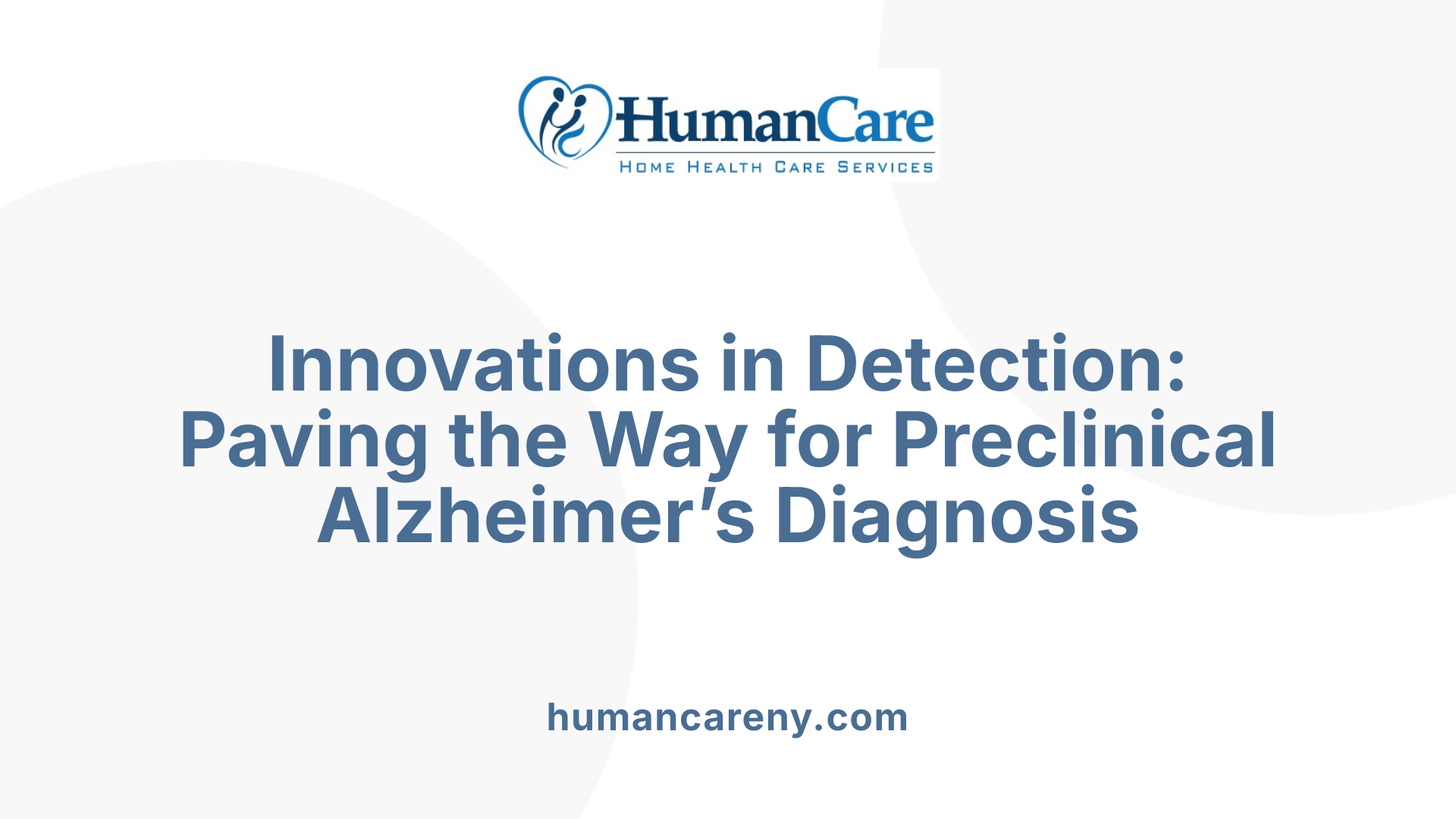The Importance of Early Diagnosis in Alzheimer’s Treatment
Unlocking the Power of Early Detection in Alzheimer’s Care

Understanding Why Timely Diagnosis Saves Lives and Shapes Futures
Alzheimer’s disease presents significant challenges globally, yet early diagnosis can dramatically alter the trajectory of the condition. Recognizing the importance of detecting the disease at its earliest stages enables patients, families, and healthcare providers to take proactive steps toward management, treatment, and support. This article explores the substantial benefits of early diagnosis and delves into the latest methods, research advances, societal impacts, and implications for future Alzheimer’s care.
The Significance of Early Diagnosis in Alzheimer’s Disease

What is the significance of early diagnosis of Alzheimer's disease?
The early diagnosis of Alzheimer's disease carries profound importance for individuals and their families. It allows for timely treatment, which can help manage symptoms and may slow the progression of the disease. Early detection often involves advanced tests such as biomarkers, brain imaging, and genetic risk assessments, which can identify the disease before significant brain damage occurs.
With an early diagnosis, patients gain the opportunity to participate actively in their healthcare decisions, plan for future needs, and set personal priorities like travel, career decisions, or lifestyle changes. It also enables tailored interventions that are most effective when started early, including medications targeting brain proteins involved in Alzheimer’s.
Moreover, early diagnosis helps in accessing vital resources, support groups, and education programs, fostering better understanding and support from family and community. It plays a critical role in reducing the stigma associated with dementia, as awareness and open communication can challenge misconceptions.
Importantly, identifying Alzheimer’s early opens doors for participation in clinical trials and research, contributing to the development of new therapies. It also facilitates legal and financial planning, empowering individuals with the knowledge to protect their interests and communicate their wishes clearly.
In summary, early diagnosis maximizes treatment potential, supports informed decision-making, reduces fear and confusion, and enhances overall quality of life for those affected by Alzheimer’s disease.
Benefits of Early Detection for Treatment and Quality of Life
What are the benefits of early detection of Alzheimer’s disease for treatment and management?
Early detection of Alzheimer's disease offers numerous advantages for treatment and overall management of the condition. It allows individuals to access medications and therapies at a stage when they can be most effective, potentially slowing the progression of symptoms. Early diagnosis provides valuable time for patients and their families to plan future care, including legal and financial arrangements, which can reduce stress and uncertainty.
Furthermore, early detection facilitates participation in clinical trials, helping to advance research and develop new treatments. It also supports the use of lifestyle modifications—such as healthier diets, increased physical activity, and mental engagement—which may delay or slow disease progression.
Sharing information about diagnosis can reduce stigma associated with dementia and raise awareness, encouraging others to seek support early. Overall, being diagnosed early enhances disease management, supports informed decision-making, and can significantly improve quality of life for patients and their caregivers.
How does early diagnosis of Alzheimer’s disease improve patient outcomes and care planning?
Early diagnosis is central to improving outcomes because it enables timely initiation of measures that can preserve cognitive functions and overall well-being. Healthcare providers can tailor interventions based on the individual’s specific needs, using advanced tools like neuroimaging and biomarkers for accurate detection.
It allows patients to understand their condition better, empowering them to make informed decisions about their future, including legal, financial, and care planning. Recognizing symptoms early also opens opportunities to participate in treatment programs and clinical trials that might not be available at later stages.
This proactive approach reduces uncertainty and helps families prepare emotionally and practically for the progression of the disease. Early care coordination can improve resource allocation, support better management of symptoms, and potentially lower healthcare costs by delaying the need for long-term care facilities.
Tools and Technologies in Early Diagnosis of Alzheimer’s Disease

What methods and tools are used for early diagnosis of Alzheimer’s disease?
Early diagnosis of Alzheimer’s involves multiple assessment tools that help identify the disease at its earliest stages. Clinicians typically start with cognitive and neuropsychological tests such as the Mini-Mental State Examination (MMSE) or the Montreal Cognitive Assessment (MoCA) to evaluate memory, reasoning, and thinking skills.
Gathering information from family members or caregivers about behavioral or personality changes also plays a vital role. Functional assessments help understand how daily activities are affected by cognitive decline.
Brain imaging techniques, including Magnetic Resonance Imaging (MRI), Computed Tomography (CT), and Positron Emission Tomography (PET) scans, are used to detect physical changes in the brain. MRI can reveal brain atrophy, while PET scans can visualize amyloid plaques or tau tangles characteristic of Alzheimer’s.
Laboratory tests analyzing cerebrospinal fluid (CSF) for biomarkers like beta-amyloid and tau proteins provide molecular evidence of disease pathology. Blood tests for these biomarkers are increasingly being developed, offering less invasive options to support diagnosis.
In addition to these tests, a thorough medical history, physical examination, and neurological assessments help rule out other conditions that may mimic Alzheimer’s. Collectively, these tools enable clinicians to diagnose Alzheimer’s disease earlier and more accurately, often before severe symptoms develop.
What recent advances bolster early detection of Alzheimer’s?
Recent progress in diagnosing Alzheimer’s disease centers around biomarker development and advanced imaging techniques. Blood-based biomarkers, such as plasma beta-amyloid, phosphorylated tau, neurofilament light chain, and glial fibrillary acidic protein (GFAP), are showing great promise. These blood tests could allow earlier and more accessible detection of Alzheimer’s pathology, even during preclinical stages.
Neuroimaging advances include the use of PET scans with specialized tracers that bind to amyloid plaques and tau proteins in living brains. MRI technology has improved, enabling high-resolution imaging of brain structures and early signs of shrinkage.
Additionally, genetic profiling, especially focusing on the APOE4 gene, enhances early risk assessment. Emerging digital tools, like AI-powered voice and speech analysis, and retinal scans are being explored as non-invasive screening options.
These innovations are paving the way for diagnosing Alzheimer’s before symptoms become pronounced, opening opportunities for earlier intervention, better management, and participation in clinical trials.
Research Progress and Future Directions in Early Alzheimer’s Detection

What are recent advances and research developments in early detection of Alzheimer’s disease?
Recent research in early Alzheimer’s detection has seen promising advancements in several areas. One of the most notable developments is the emergence of blood-based biomarkers, such as plasma amyloid-beta, tau proteins, neurofilament light chain, and GFAP. These biomarkers are increasingly accurate in detecting Alzheimer’s pathology well before symptoms appear, offering a less invasive alternative to traditional methods.
Additionally, neuroimaging techniques have significantly advanced. PET scans using tracers for amyloid and tau proteins allow visualization of early brain changes. Structural MRI provides detailed images of brain shrinkage, while functional MRI reveals reduced activity in key regions involved in memory. Novel imaging approaches like retinal scans are also under investigation for their potential to detect early changes.
Genetic risk profiling has become more refined, especially focusing on genes such as APOE4, which is known to increase risk for Alzheimer’s. Recent studies also show associations between biomarkers, cognitive function, and genetic factors in middle-aged adults, helping identify at-risk individuals even earlier.
Emerging digital and AI-based tools are expanding screening options. AI algorithms analyzing voice patterns, speech, and even eye movements are being developed for early detection. Non-invasive methods like retinal and eye imaging also offer promising, accessible screening options.
Collectively, these innovations aim to identify Alzheimer’s disease at its earliest stages, ideally before clinical symptoms emerge. Early detection facilitates timely intervention, lifestyle modifications, and better planning, supporting more effective management of the disease in the future.
| Development Area | Technologies/Methods | Potential Benefits |
|---|---|---|
| Blood Biomarkers | Plasma amyloid-beta, tau, neurofilament light, GFAP | Less invasive, early detection, suitable for routine screening |
| Neuroimaging | PET with amyloid/tau tracers, MRI, retinal imaging | Visualize early brain changes, structural/functional insights |
| Genetic Profiling | APOE4, other genetic markers | Assess risk early, personalize interventions |
| Digital & AI Tools | Voice analysis, eye movement tracking | Accessible, scalable, early signs detection |
Looking ahead, ongoing research is focused on refining these biomarkers and imaging techniques, standardizing their use, and integrating multi-modal approaches for greater accuracy. The goal is to enable pre-symptomatic diagnosis, promoting early intervention efforts and supporting ongoing studies into disease-modifying therapies.
Empowering Through Knowledge and Action
The clear message is that early diagnosis of Alzheimer’s disease is a cornerstone of effective treatment, management, and societal support. Advances in biomarkers, neuroimaging, and genetic profiling are revolutionizing the timeline at which we can detect the disease, often decades before symptoms appear. This enables personalized intervention, participation in clinical trials, and better planning, which collectively enhance quality of life and work toward delaying or preventing severe dementia. As research progresses and detection methods become more accessible, early diagnosis will continue to be a vital asset in the global effort to combat Alzheimer’s, fostering hope, awareness, and action at every level.
References
- The 10 benefits of early diagnosis | Alzheimer Society of Canada
- Alzheimer's Disease - Why We Need Early Diagnosis - PubMed
- Why Get Checked | Alzheimer's Association
- [PDF] The importance of early diagnosis - Alzheimer Society of Canada
- Importance of a timely diagnosis - Alzheimer's Disease International
- Alzheimer's disease - Diagnosis and treatment - Mayo Clinic
- Benefits of Early Diagnosis - Wisconsin Alzheimer's Institute
- The importance of early diagnosis in Alzheimer's disease and mild ...
- Diagnosis of Early Alzheimer's Disease: Clinical Practice in 2021



































































































